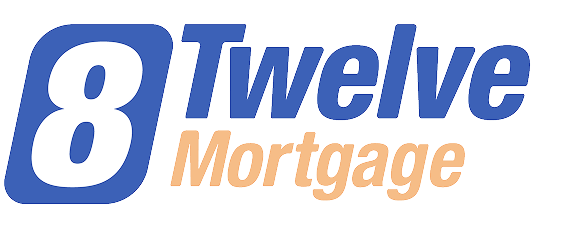
Summary
- You may not realize your T4E slip covers EI benefits, overpayments, and even special cases like non-taxable tuition. Accessing it through My Service Canada Account or by mail ensures you correctly report everything come tax time.
- Tax exemptions on T4E can hinge on factors like Indigenous status or specific tuition assistance. The CRA, not Service Canada, confirms whether you owe taxes or receive a refund based on these details.
- Verifying T4E accuracy is your best defense against tax filing headaches. Keeping personal payment records, promptly checking MSCA, and contacting Service Canada about discrepancies helps you avoid overpayments and penalties.
If you received EI in Canada, you’ll need your T4E slip. Here’s how to find it and avoid tax mistakes.
Between April 1st, 2024 and March of this year, Canada had over 1.1 million active Employment Insurance recipients.
If you're one of the beneficiaries, you'll need to keep an eye out for the T4E slip this tax season. But what exactly is the T4E tax slip, and why do you need it? We'll help you cover any questions you may have, including:
- What the T4E slip is
- How to get one
- Handling overpayments and amendments
- Verifying T4E accuracy and getting tax-exempt benefits
Ready? Let's begin!
P.S. — If you're a homeowner receiving EI, you may want to hear about Lotly. We work with you and more than 50+ lenders across Canada to find you the best possible home loans for your financial goals. Secured home loans can help you tap into the value of your home at far better rates than unsecured personal loans so you can find financial freedom sooner. Book a free consultation today to learn more.
What is the T4E tax slip?
The T4E tax slip is a document issued by the Government of Canada to report any Employment Insurance (EI) benefits or other types of provincial or territorial benefits received by an individual during the tax year.
It's an essential document for Canadians who have received these benefits, as it must be reported on their annual income tax return.
Steps to obtain a T4E tax slip in Canada
To obtain a T4E Canada tax slip, follow these steps:
1. Access My Service Canada Account (MSCA):
- Sign in to your MSCA or register for an account if you don't have one.
2. View and print your T4E online:
- Your T4E slip is typically available online as early as February 1st.
- Navigate to the tax information section in your MSCA.
- Select the option to view and print your T4E slip.
3. Choose your delivery preference:
- You can opt to receive your T4E electronically through MSCA or by mail.
- To change your preference to online delivery, update your settings in MSCA.
4. Wait for mail delivery (if applicable):
- If you've chosen to receive your T4E by mail, it should arrive before mid-March.
5. Check alternate sources:
- If you haven't received your T4E by mid-March, you can view or print an itemized statement of your benefits through MSCA.
6. Contact Service Canada if needed:
- If you still don't have your T4E by March 10th or have issues with your slip, contact Service Canada for assistance.
Requirements for receiving a T4E tax slip
You will receive a T4E slip if you:
- Received Employment Insurance (EI) benefits
- Repaid an EI overpayment from a previous tax year
- Participated in approved employment programs with EI-funded financial assistance
- Received maternity or parental benefits
- Obtained tuition assistance
If any of these situations apply and you haven’t received your T4E slip by mid-March, reach out to Service Canada for assistance. Similarly, if you chose online delivery but cannot access your T4E through MSCA, Service Canada is available to help resolve the issue.
Criteria for tax exemptions related to T4E benefits
Tax exemptions related to T4E benefits are determined by the Canada Revenue Agency (CRA), not by Service Canada. The criteria for tax exemptions on T4E benefits include:
- Status under the Indian Act: Individuals who are registered or eligible to be registered under the Indian Act may qualify for tax-exempt benefits. These amounts are reported in Box 18 of the T4E slip.
- Non-taxable tuition assistance: Some tuition assistance reported on the T4E is non-taxable. This amount is reported in Box 21 of the T4E slip and should be entered on line 25600 of your tax return.
- Overlap of benefits between calendar years: If you receive EI benefits that overlap two calendar years, you may qualify for a tax exemption in your first tax year.
If you believe you’re exempt from paying income tax but notice that tax has been deducted from your benefit payments on your T4E, please note that an amended T4E will not be issued.
Instead, when you file your income tax return using the information on your T4E, the CRA will confirm your exemption status and determine what you owe. If taxes were deducted incorrectly, the CRA will process a reimbursement.
How to handle overpayments on T4E slips
Handling overpayments on T4E slips involves several steps:
Verify the overpayment:
- Check your My Service Canada Account (MSCA) to compare the gross payments issued against the amounts paid on your T4E.
- Look for any messages in MSCA indicating that your claim is under review.
Understand the reporting:
- Overpayments are typically reported in Box 26 of your T4E slip.
- Box 30 shows the total repayment, which includes the amount from Box 26.
Repayment options:
- Contact Service Canada to discuss repayment arrangements.
- You can repay through online banking, by mail, or in person at a Service Canada Centre.
Tax implications:
- Report the repayment amount on line 23200 of your tax return for the year you made the repayment.
- The repayment doesn't affect your previous year's T4E; it will be reflected on the current year's slip.
Special considerations:
- For CERB overpayments, the repayment will be included on the T4E for the year you repaid, not the year you received the benefit.
- If your EI benefits were reduced to repay an amount, your T4E will show the net amount, and you can't claim a deduction.
Remember, it's crucial to address overpayments promptly to avoid complications with your tax filing and potential penalties.
Verifying T4E accuracy (best practices)
When it comes to verifying the accuracy of your T4E slip, there are a few best practices that can help ensure you receive any necessary reimbursements and avoid overpayments in the first place:
- Keep track of your gross payments: It's important to keep track of all the payments you receive while on EI, whether through MSCA or by keeping physical records. This can help catch any discrepancies and make it easier to address them with Service Canada.
- Monitor your claim status: If you notice that your claim is under review or if you receive any messages indicating a potential issue, reach out to Service Canada for clarification. Staying informed about the status of your claim can prevent surprises later on.
- Review your T4E form: When you receive your T4E slip, take the time to review it carefully for any errors or discrepancies. If you notice anything that doesn't match up with your records, contact Service Canada immediately.
By following these practices and promptly addressing any issues, you can avoid overpayments and ensure accurate reporting on your tax return. Remember, being proactive when it comes to EI repayments can save you time, money, and stress in the long run.
Find financial freedom sooner with Lotly
Let's go over everything we've covered in this guide so far:
- You may not realize your T4E slip covers EI benefits, overpayments, and even special cases like non-taxable tuition. Accessing it through My Service Canada Account or by mail ensures you correctly report everything come tax time.
- Tax exemptions on T4E can hinge on factors like Indigenous status or specific tuition assistance. The CRA, not Service Canada, confirms whether you owe taxes or receive a refund based on these details.
- Verifying T4E accuracy is your best defense against tax filing headaches. Keeping personal payment records, promptly checking MSCA, and contacting Service Canada about discrepancies helps you avoid overpayments and penalties.
Now that you're armed with all the right knowledge, take the necessary steps to protect your financial future. Whether it's by checking your T4E form regularly, staying informed about potential tax exemptions, or seeking clarification from Service Canada when needed, being proactive can save you time and money in the long run.
If you own a home and need further help managing your finances, consider using Lotly. We'll learn about your financial goals and situation to find a home equity loan offering that perfectly suits your needs. Book a free consultation today to learn more.
Frequently Asked Questions
Can I claim EI repayments as a tax deduction?
Unfortunately, no. While EI repayments can help to provide you with financial relief in the long run, they are not considered eligible tax deductions.
Can I receive a refund on my overpaid EI benefits?
Yes, you can receive a refund on your overpaid EI benefits. If you believe you have overpaid, contact Service Canada as soon as possible and provide them with any supporting documentation.
How do I know if I am eligible for a tax exemption on my T4E slip?
Your eligibility for tax exemptions on your T4E slip depends on various factors, such as Indigenous status or specific tuition assistance. For more eligibility information, consult a tax professional or visit the Canada Revenue Agency website.





